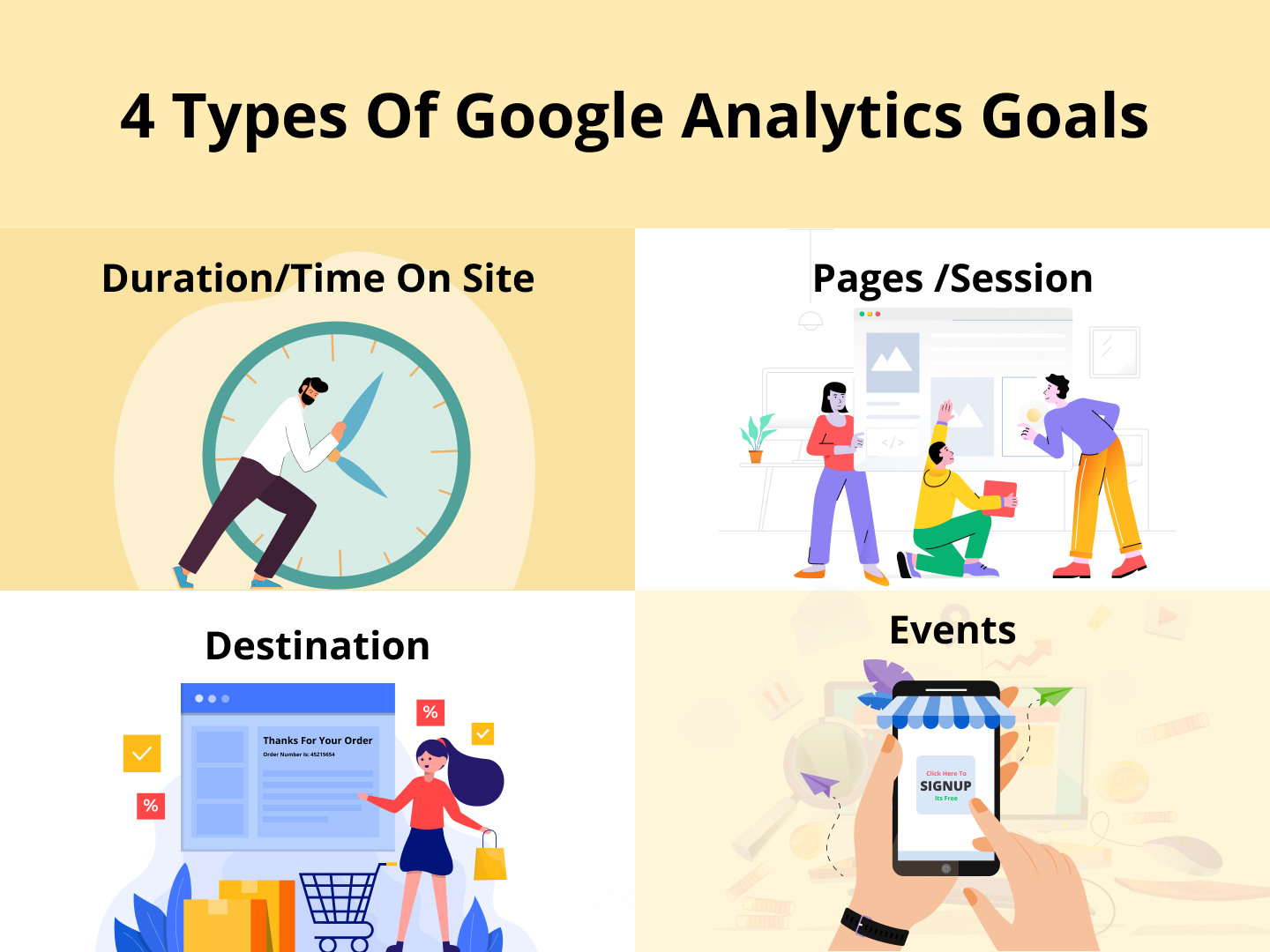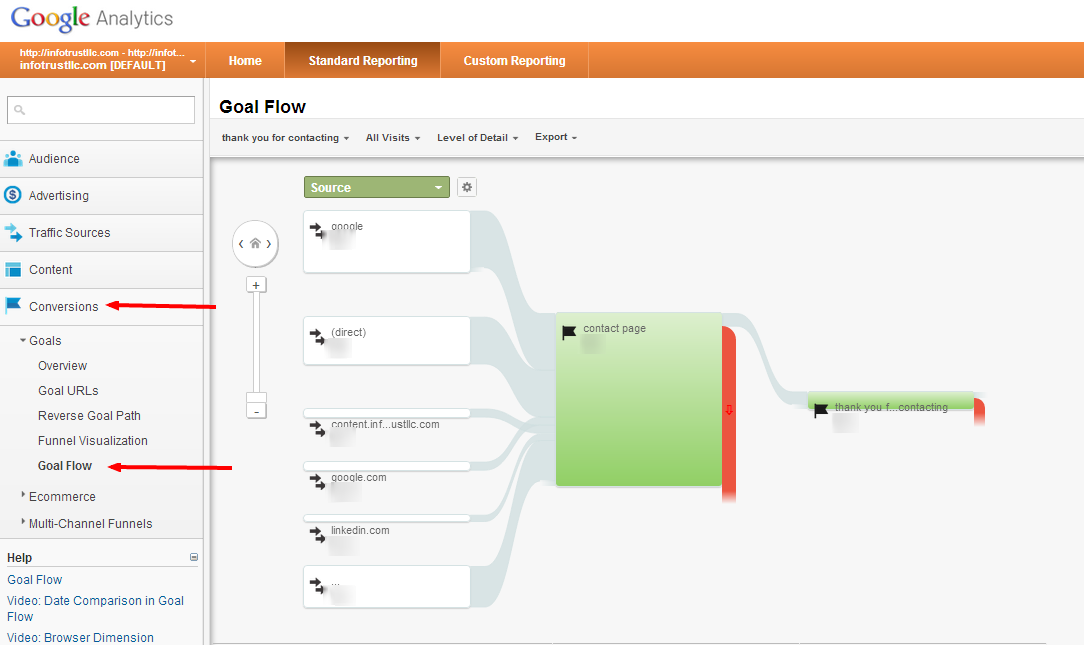Trick Insights on What Data Is Google Analytics Goals Unable to Track
Trick Insights on What Data Is Google Analytics Goals Unable to Track
Blog Article
Discover the Limitations of Google Analytics Goals: Revealing the Information Types That Remain Untrackable
As companies progressively rely upon data-driven decision-making, comprehending the restrictions of devices like Google Analytics comes to be vital. While Google Analytics Goals offer important understandings into user communications, there exist data types that thwart monitoring, positioning challenges to a thorough understanding of individual habits. These untrackable data types question concerning the accuracy and completeness of the analytics information that companies heavily trust for their electronic techniques. Curious to uncover the covert dead spots in your information evaluation process?
Insufficient User Trip Tracking
Incomplete customer trip tracking within Google Analytics can hinder the capacity to properly assess customer habits. When the user trip is not completely tracked, there are gaps in the information that stop a detailed understanding of just how users engage with a site. This absence of understanding can result in missed opportunities for optimization and enhancements to the customer experience.
One usual problem with insufficient individual trip tracking is the lack of ability to see the complete course that users take previously finishing a goal or leaving the site. Without this details, it is challenging to recognize where users may be coming across barriers or friction points that prevent them from converting. Furthermore, incomplete monitoring can cover the effect of particular advertising efforts or internet site changes on user behavior.
To address this restriction, it is vital to set up proper tracking devices within Google Analytics to record the entire customer trip. This may entail establishing up occasion monitoring, goal funnels, or utilizing devices like Google Tag Manager to make certain that no vital communications go unrecorded. By acquiring a thorough sight of the individual journey, website proprietors can make more educated choices to enhance user involvement and drive conversions.
Attribution Challenges
Navigating via attribution difficulties in Google Analytics requires a complete understanding of exactly how different touchpoints add to the total conversion process. Attribution challenges arise from the complexity of modern-day client trips, where customers communicate with numerous networks prior to converting.
One usual acknowledgment challenge is the trouble in attributing conversions to the appropriate source, specifically in cases where users connect with several channels prior to converting. In addition, cross-device monitoring postures one more acknowledgment difficulty, as individuals frequently switch over in between devices during their journey, making it testing to track their interactions effortlessly.
Offline Conversions
Given the challenges connected with connecting conversions precisely in online channels, the dimension of offline conversions presents a significant opportunity for online marketers looking for a more extensive understanding of their clients' journey. Offline conversions describe activities that consumers absorb the physical world, such as making purchases in brick-and-mortar shops or over the phone, participating in occasions, or engaging with printed materials - what data is google analytics goals unable to track. These conversions are essential for organizations that run both online and offline, as they supply beneficial insights into the performance of advertising projects throughout various touchpoints
Tracking offline conversions generally presented a substantial obstacle for online marketers, as it was testing to attach these actions back to certain on-line interactions properly. With improvements in innovation, such as the integration of CRM systems, one-of-a-kind identifiers, and promo code codes, businesses can currently link the space in between online and offline information to acquire a much more all natural sight of customer actions. By properly gauging offline conversions, online marketers can enhance their strategies, allot sources more successfully, and eventually improve the total customer experience.
Cross-Device Tracking
Cross-device tracking plays a critical duty in recognizing the interconnected nature of customers' electronic interactions throughout several gadgets. In today's omnichannel globe, where users effortlessly switch in between smartphones, tablet computers, and desktops, tracking their habits throughout these tools is necessary for online marketers to get a comprehensive view of their consumer trip.

Furthermore, privacy problems and laws such as GDPR and CCPA have better challenging cross-device tracking. With customers requiring even more control over their data and raised limitations on monitoring this innovations, marketing experts should locate innovative and privacy-compliant means to connect user interactions throughout gadgets.
Dynamic Content Engagement
Recognizing individual interaction with vibrant web content is crucial in optimizing digital marketing techniques for boosted target market interaction. Dynamic content refers to web site aspects that alter based on user actions, choices, or other aspects, offering a tailored experience. Nonetheless, tracking user communications with dynamic material positions difficulties visit our website for traditional analytics devices like Google Analytics.
While Google Analytics can track standard communications like clicks and page sights, it may struggle to catch more nuanced engagements within dynamic web content. what data is google analytics goals unable to track. Metrics such as time invested in details vibrant components, float actions, or interactions within pop-ups are frequently not quickly measurable using conventional tracking methods. This restriction impedes marketing experts' capability to completely grasp exactly how users are involving with vibrant content and customize their methods as necessary

Verdict
In conclusion, Google Analytics goals have constraints in tracking incomplete customer journeys, connecting conversions accurately, capturing offline conversions, tracking cross-device interactions, and determining vibrant content engagement. These constraints highlight the importance of discovering extra monitoring methods and tools to gain a much more comprehensive understanding of customer actions and conversions past what Google Analytics can supply.
While Google Analytics Goals deal important insights right into customer interactions, there exist information types that elude tracking, positioning difficulties to a detailed understanding of customer habits.Incomplete user journey tracking within Google Analytics can impede the capability to properly examine customer behavior. When the customer trip special info is not fully tracked, there are voids in the data that stop a comprehensive understanding of just how customers engage with a website.One usual issue with incomplete customer journey monitoring is the lack of ability to see the complete path that users take before completing an objective or leaving the site. By acquiring an extensive sight of the customer journey, internet site proprietors can make even more informed choices to boost customer engagement and drive conversions.
Report this page